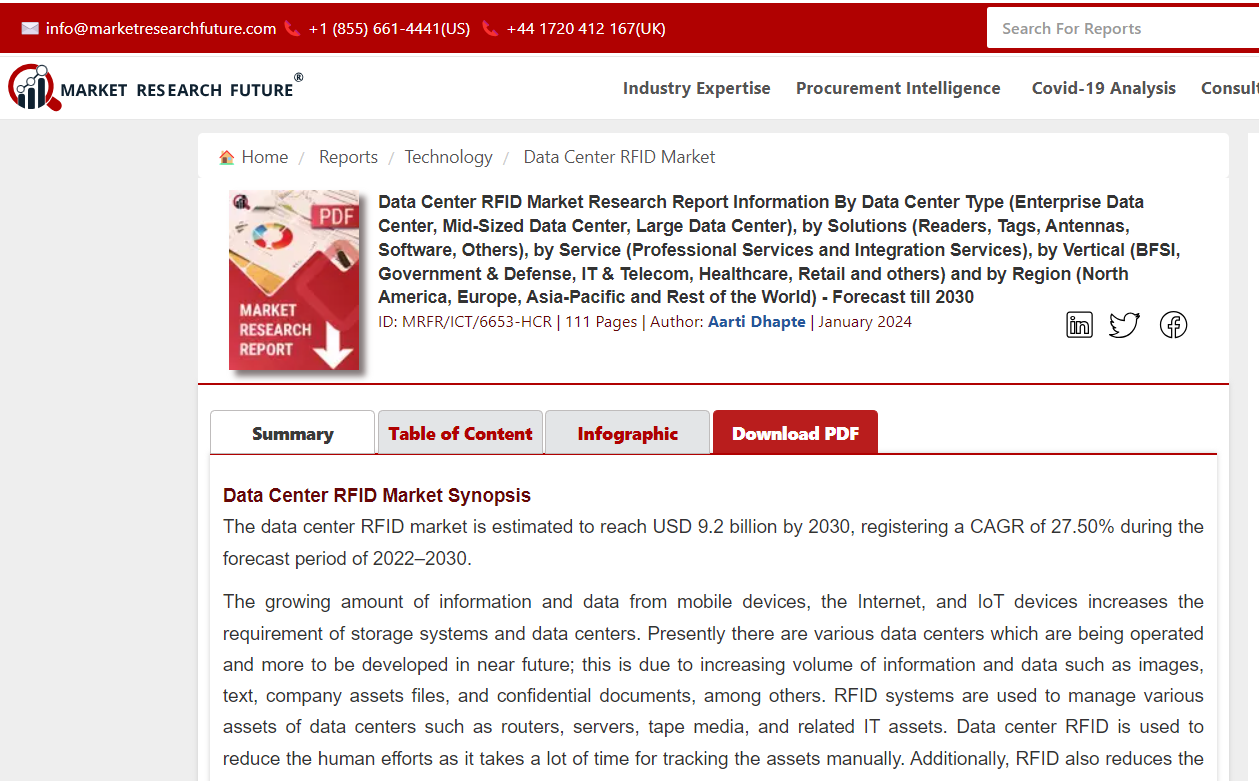
The data center RFID market is expected to develop at a compound annual growth rate (CAGR) of 27.50% from 2022 to 2030, when it is expected to reach USD 9.2 billion. There is a greater need for storage systems and data centers because of the explosion of data coming from mobile, Internet, and Internet of Things (IOT) devices. To minimize errors and reduce manual tracking efforts, data centers use RFID devices to manage assets such as servers, routers, and tape media. One major reason driving the global data center RFID market is the increased requirement for data centers due to the growing amount of information. In order to reduce losses during data center outages, which can run up to USD 93 per second, data center RFID is essential.
Type of Data Center: Mid-sized, Large, and Enterprise Data Centers:
Solutions: Readers Tags: Software, Antennas, and other Services includes.
Integration Services and Professional Services
Verticals: BFSI, Government and Defense, Retail, Healthcare and IT & Telecom, Other Region includes Americas and Europe, Pacific Islands and the rest of the world.
2018 recorded the greatest market share in North America, led by important suppliers such as Cisco System, Inc., Hewlett-Packard Inc., EMC Corporation, and CyrusOne. RFID and data centers were early adopters, which fueled industry expansion.
Because of its rapid digitalization and acceptance of new technologies, Asia-Pacific is expected to develop at the highest rate among regional markets. The market is expanding due to the rising number of data centers in the area, which is being driven by the region’s growing use of social media and data from businesses, particularly in the BFSI.
HP Inc., IBM Corporation, Avery Dennison Corporation, Impinj, Inc., RF Code Inc., Omni-ID, Ltd., Zebra Technologies Corporation, Alien Technology Corporation, Invengo Information Technology Co. Ltd., and GAO RFID Inc. (Canada) are some of the major companies in the global data center RFID market.
